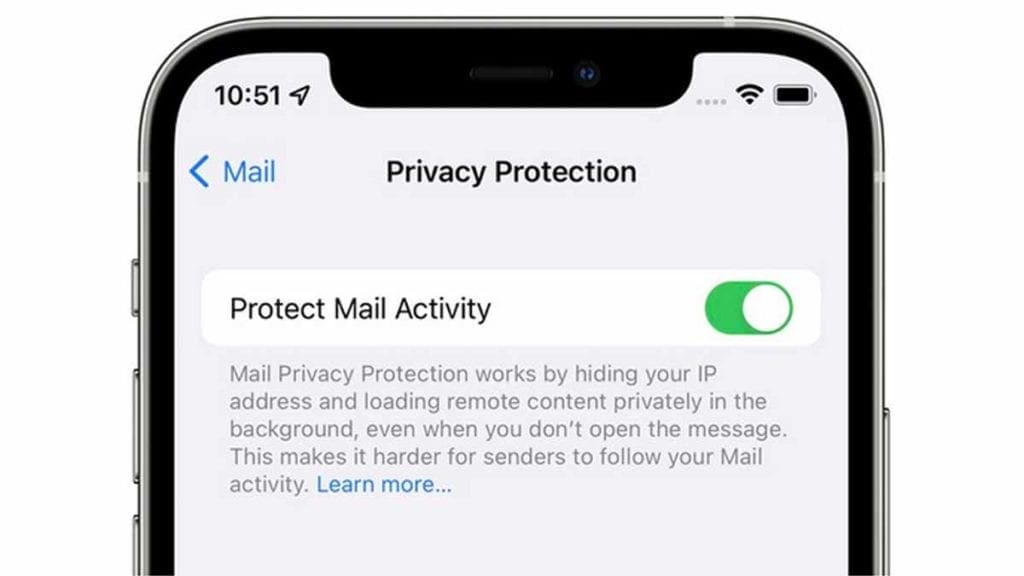Apple recently turned the world of marketers and digital advertising platforms upside down by introducing a set of online privacy protection features like App Tracking Transparency. iPhone and iPad users regained some of the freedom that was lost to apps that were tracking their data without consent.
The iOS mail privacy update was a great success, despite Facebook’s and various advertisement agencies’ complaints. It allowed Apple to continue the fight for online privacy by adding the new iOS Mail Privacy Protection feature.
During the developer’s conference (WWDC 2021), Apple announced a series of privacy updates coming to all of their major platforms. We’re expecting exciting things like local processing for Siri, a VPN, and various subscription-based privacy services.
However, one of the most interesting ones is the iOS Mail Privacy Protection. In this article, you’ll learn what this feature is all about and what it means to you as a consumer of online content.
What Is iOS Mail Privacy Protection?
Many companies keep track of when you’ve read their email, how much time you spent reading it, what links you clicked on, and even your IP address. This is possible thanks to certain images that load only when you read your email and sometimes sneaky tracking pixels are used as well.
The pixels are invisible and you don’t even know they’re there, but they’re used instead to record data. In either case, when you open the email, the sender can see that and gather all sorts of data. This data is usually used for marketing purposes and it’s valuable for advertisers.


With the introduction of iOS Mail Privacy Protection, Apple aims to block email tracking. This feature will be included with the new macOS Monterey, as well as iOS 15, and iPadOS 15. However, Mail Privacy Protection won’t be enabled by default.
Apple will point out the option during the operating system update and you’ll also be able to turn it on by navigating to the Mail section in the Settings menu.
How Does iOS Mail Privacy Protection Work?
Once you enable Mail Privacy Protection, the new feature will hide your IP address, assign a random IP address, and divert remote content through several proxy services. This prevents the email senders from gathering any data from the emails you read.
As mentioned earlier, email senders can learn about you by including hidden pixels inside the email. When you open the email, you download this content and enable third parties to gather certain information. With Mail Privacy Protection enabled, the hidden pixels or images won’t be downloaded automatically.
Instead, it will be downloaded in the background without even accessing the mail. Additionally, this content is routed through a number of proxy servers.
The proxy network assigns a random IP address that is connected only to the region where you are located. This makes it impossible for the sender to learn your IP address, precise location, and other information that can be used to determine your online behavior.
Mail Privacy Protection significantly improves the old Mail system. Previously, you had to block the trackers by blocking remote content from being loaded. This was quite a hassle compared to the new feature and many users weren’t even aware of this option. Mai Privacy Protection simply works in the background once you enable it.
However, take note that senders can still gain some basic information from you. The random IP address assigned to you is based on the region where you’re located and it can give the email sender some generic data, but not enough to understand your behavior and breach your privacy.
That being said, you will still have to pay attention to the tracked links that you find in your emails. They don’t fall under the privacy protection feature, so once you click on them, the sender can gather certain data from you.
Is There a Negative Impact?
It depends. Mail Privacy Protection is generally a good thing, however, it has the potential to worsen the email experience.
Email marketing and advertising campaigns rely on user information to deliver relevant content. By getting rid of email tracking, marketers won’t gain any data about your location, interests, and online behavior. So, how can this be a bad thing, you ask?
Here’s what might happen with newsletter adverts and various marketing campaigns:
- You’ll receive less relevant content: Businesses, news agencies, and marketers keep track of the kind of content you consume and what you don’t. This is how they send you newsletters and other forms of content that might interest you. Your Facebook feed works the same way. If these email senders don’t know what you open, you might receive a lot more content you have absolutely no interest in.
- More emails and more spam: This is connected to the first point. Most businesses send you only a small part of the content they generate. For example, a marketing company that knows you’re interested in infographics will send you only their content or ads related to infographics. You won’t receive anything about web design, search engine optimization, Facebook ads, and much more. Without the tracking data to know your interests, they might send you everything they got. This would be terrible for both sender and receiver.
- Lack of localized content: Mail Privacy Protection hides your IP address and assigns you a random one that is related to the region where you’re located. This means that marketers can’t pinpoint your location to send you content that is only relevant for the area surrounding your home. Again, this can lead to receiving a lot more emails with ads or content that is only relevant in other parts of your country or region.
The three major points listed above will specifically impact the small newsletter publishers and the quality of your inbox. However, it remains to be seen how Apple improves this feature over time since it’s just in its infancy.
Final Thoughts
Apple’s Mail Privacy Protection feature is a great step in the right direction. We’re going to regain some of our online privacy and third parties won’t manage to gather our data to profit from it. However, this forces us to choose between increased privacy and improved content.
The data we generate is used to feed us relevant information, news, and ads for products and services we might actually be interested in. If any of this content matters to you, the decision might be a tough one to make.
So think about your online habits and decide what’s best for you. Perhaps a future implementation of Mail Privacy Protection will allow us to find a balance between the two options.





